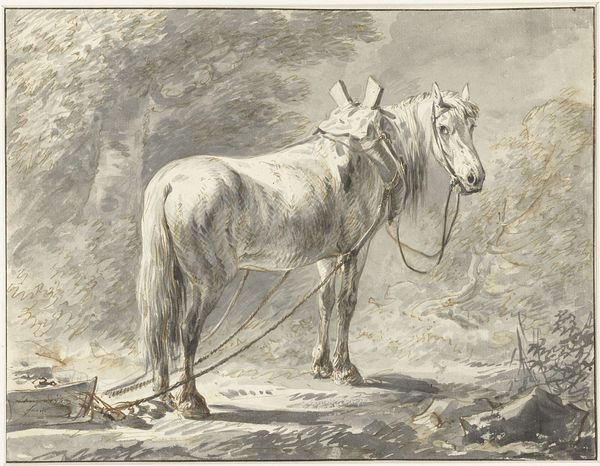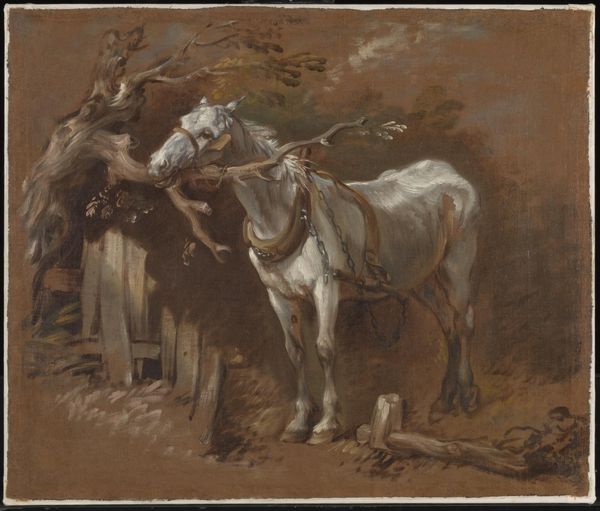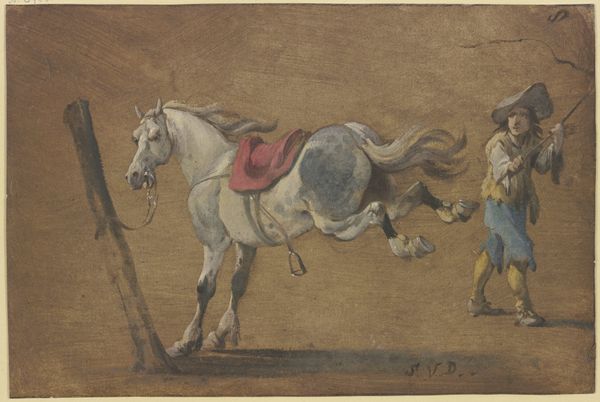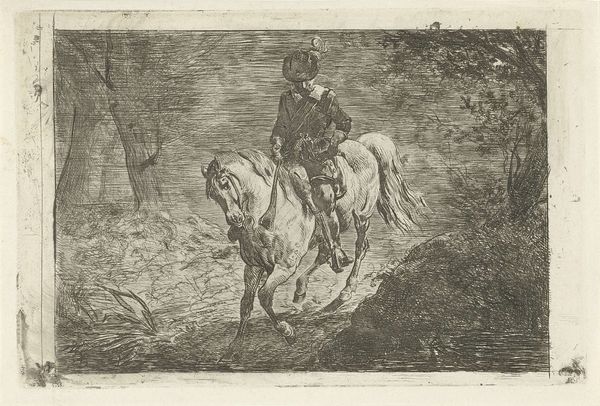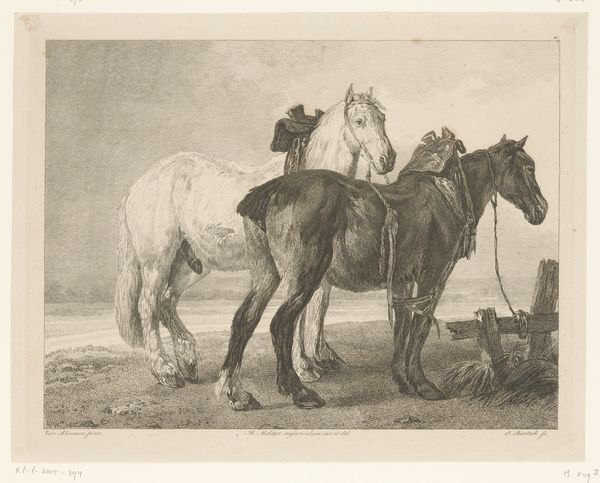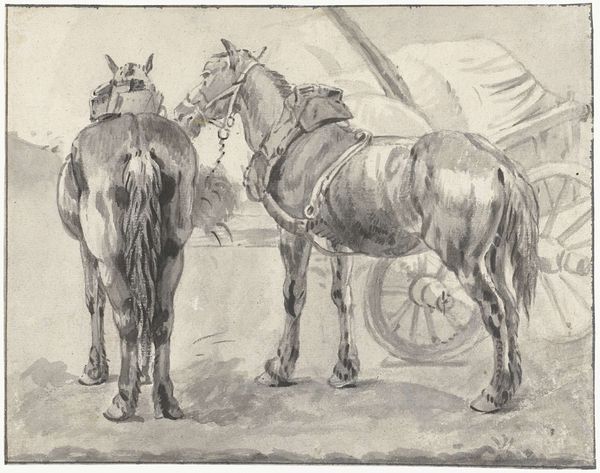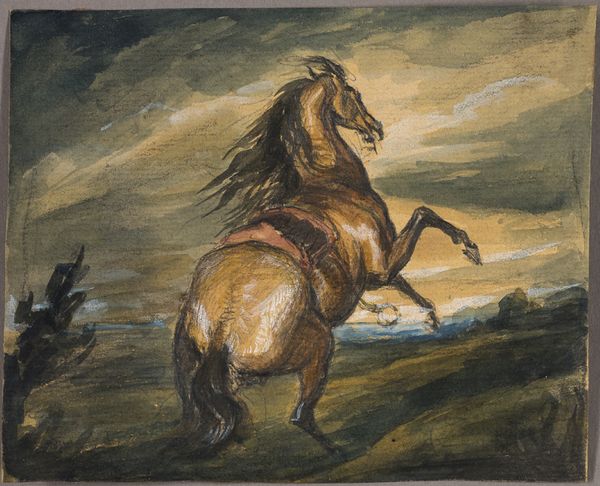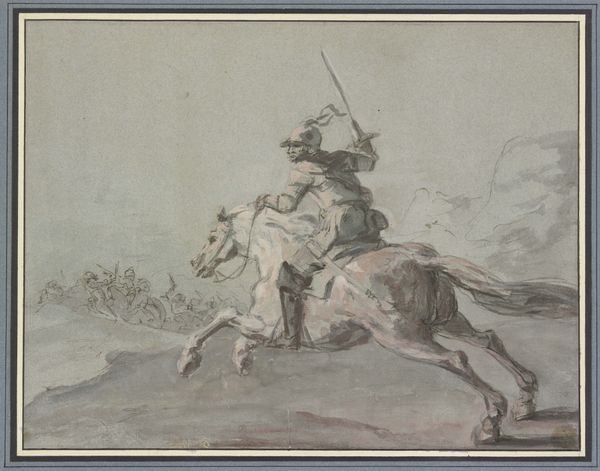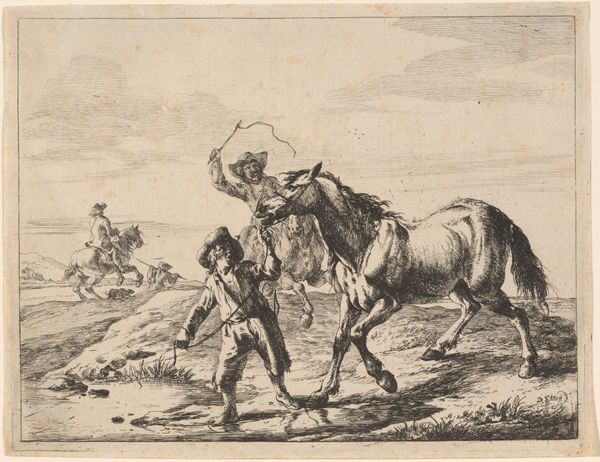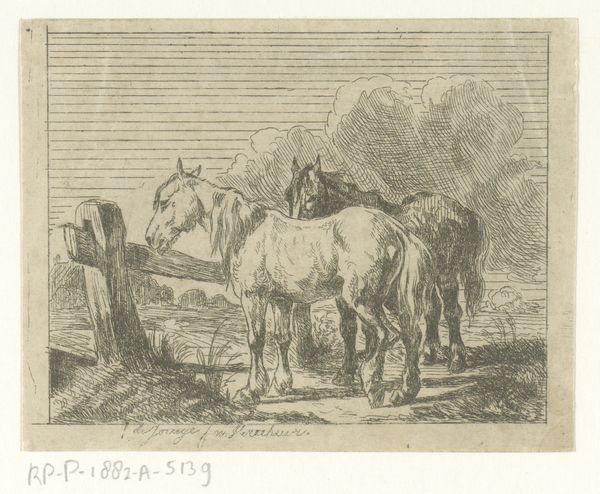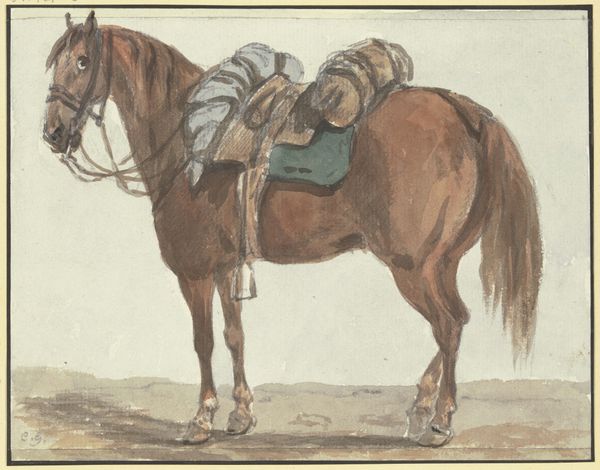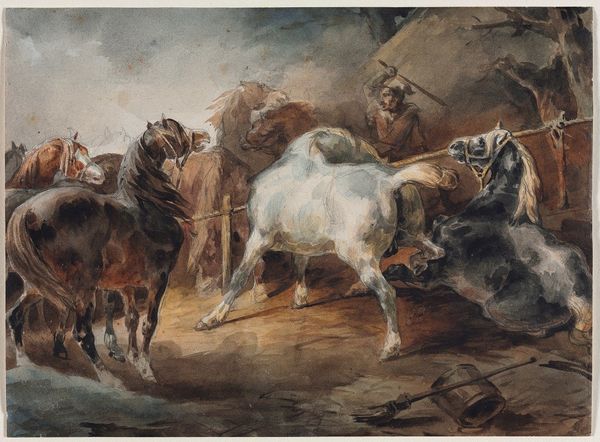
Ein Schimmel und ein bepackter Brauner an einem Korb stehend, im Hintergrund ein drittes Pferd mit blauer Decke
0:00
0:00
drawing, watercolor
#
drawing
#
baroque
#
landscape
#
watercolor
#
underpainting
#
painting painterly
#
animal drawing portrait
#
14_17th-century
#
watercolour illustration
#
genre-painting
#
watercolor
Copyright: Public Domain
Curator: Let’s explore this subtle and captivating drawing, "Ein Schimmel und ein bepackter Brauner an einem Korb stehend, im Hintergrund ein drittes Pferd mit blauer Decke," currently held in the Städel Museum’s collection and attributed to Georg Philipp Rugendas. Editor: It evokes a quiet anticipation; a certain rustic tableau emerges from the watercolor. I’m immediately drawn to how the light delicately shapes the forms, especially on the coat of the white horse. The earthy tones create a very intimate, enclosed atmosphere. Curator: Rugendas, often recognized for his dynamic battle scenes, shows us a gentler narrative here. The horses are symbols of burden and transit, but what could this mean to our understanding of genre painting in the Baroque era? It offers a glimpse into ordinary life. Editor: Observe the underpainting and swift application of watercolor. See how it accentuates the play of light across the composition! And the texture is incredible. We must keep in mind that semiotics come to play, so, we should consider the weight the basket conveys atop one of the steeds; a symbol of commerce, agriculture, perhaps a bounty harvested by peasant folk. Curator: The third horse, partially obscured with a blue blanket, could suggest a hierarchy or different role within this mundane activity. Are we observing horses of war returning, perhaps to rest? Or, more simply, the toils of commerce in a time when they defined progress. The painting really begs the questions, and welcomes you into their story. Editor: I am drawn to this more simple vision of rustic transit and how this depiction plays within the confines of painterly baroque. It speaks to the artist's grasp on technique, with watercolor painting so accessible during the baroque. It becomes a meditation on form, color, and the quiet moments of working equines in human existence. Curator: It offers a window into the past and a potent reminder of the deep interconnections humans share. I’m left pondering what journeys they’ve undertaken, and the weight that each beast bears upon his back. Editor: Yes, the careful execution certainly elevates the scene beyond a mere study. It’s as if he sought to distill the very essence of tranquility amidst what appears to be hard, unyielding labor. A beautiful insight!
Comments
No comments
Be the first to comment and join the conversation on the ultimate creative platform.
